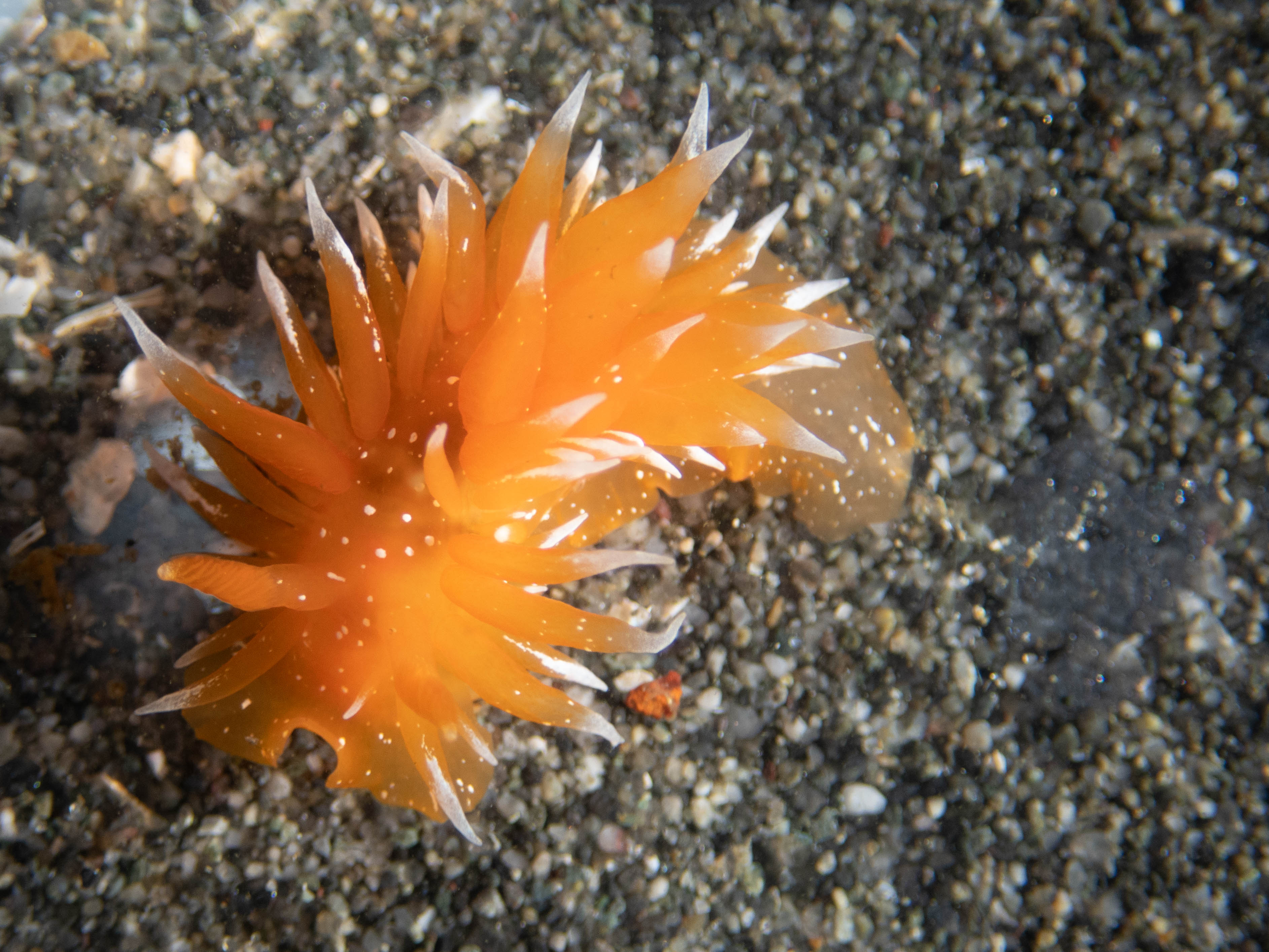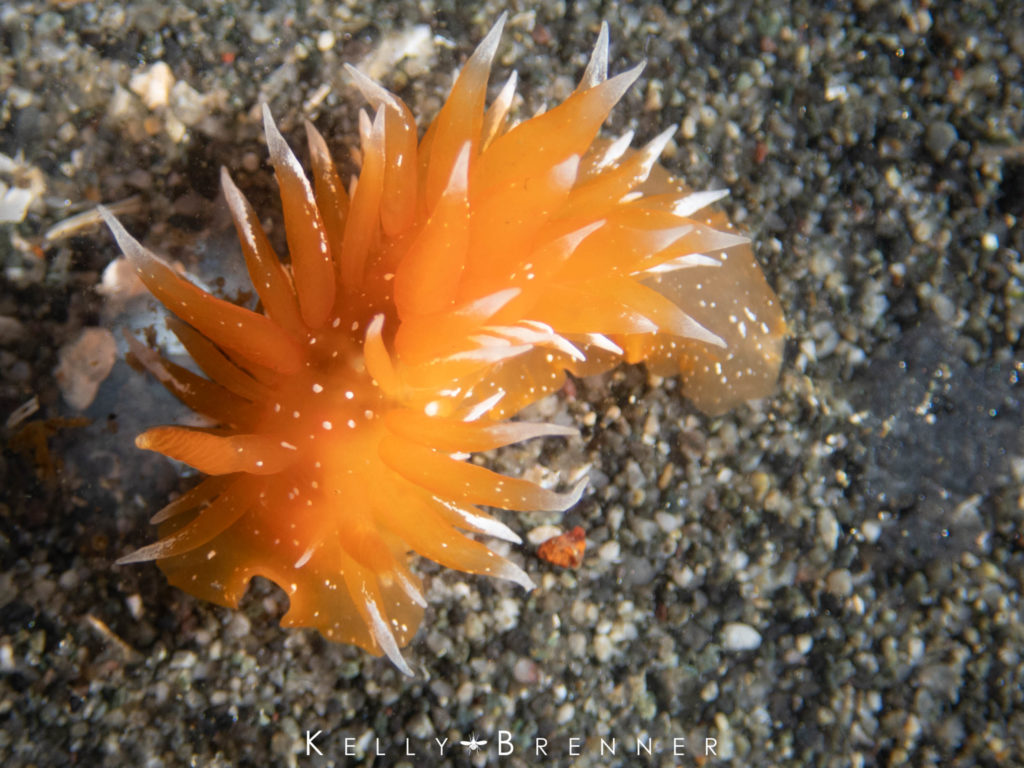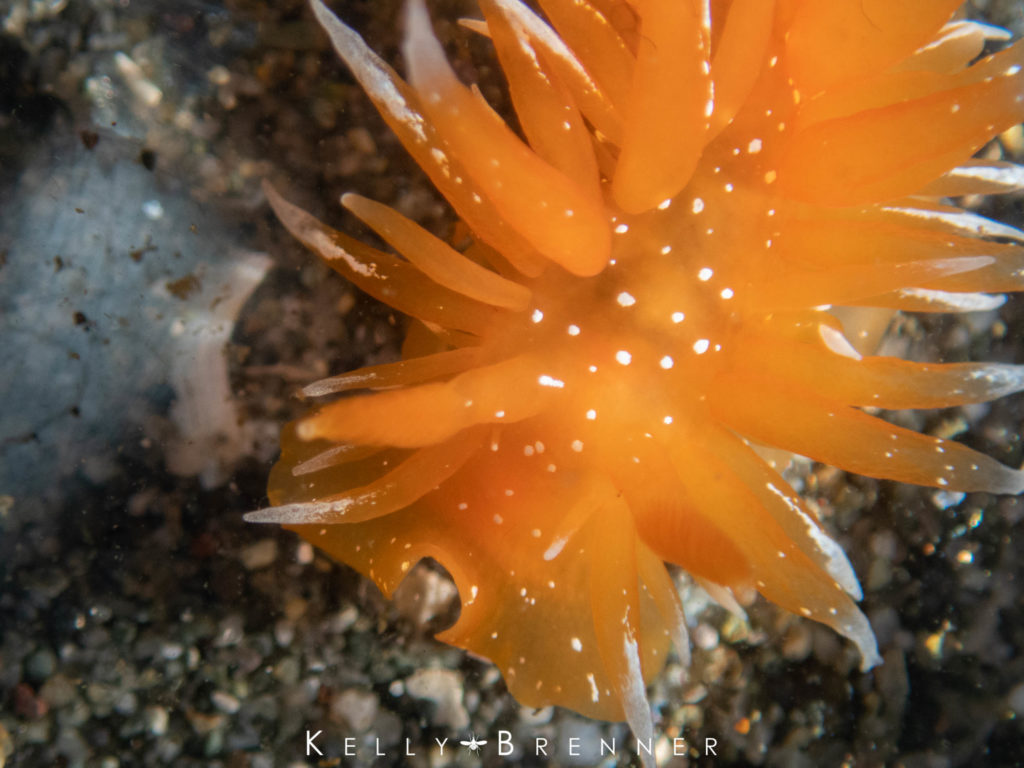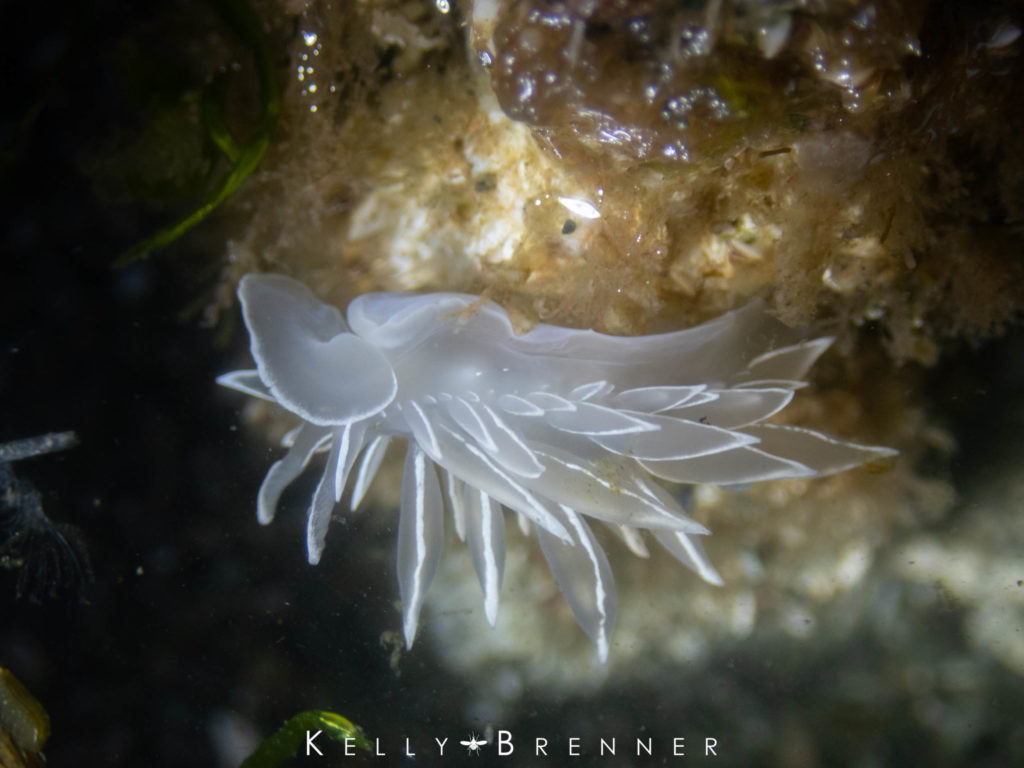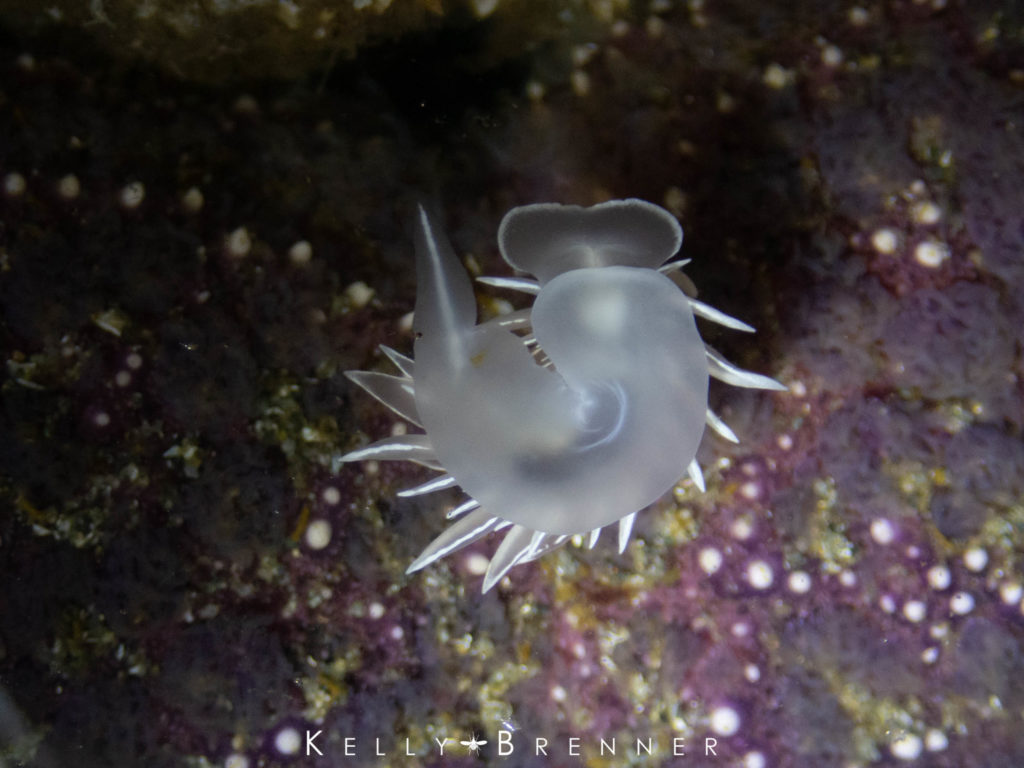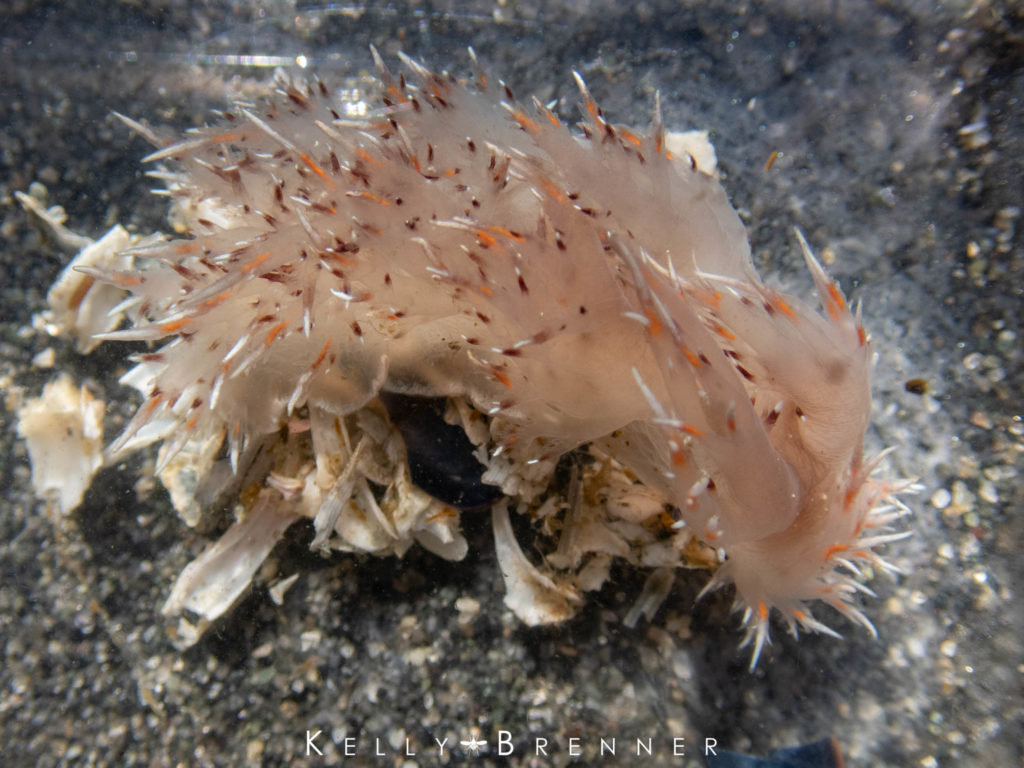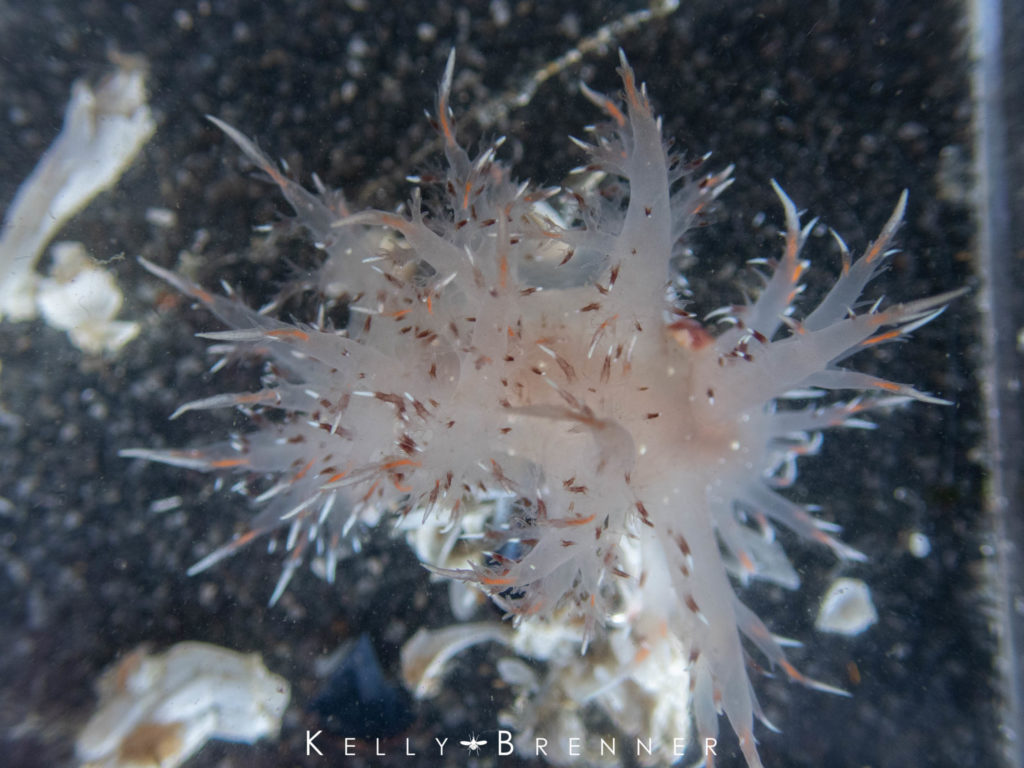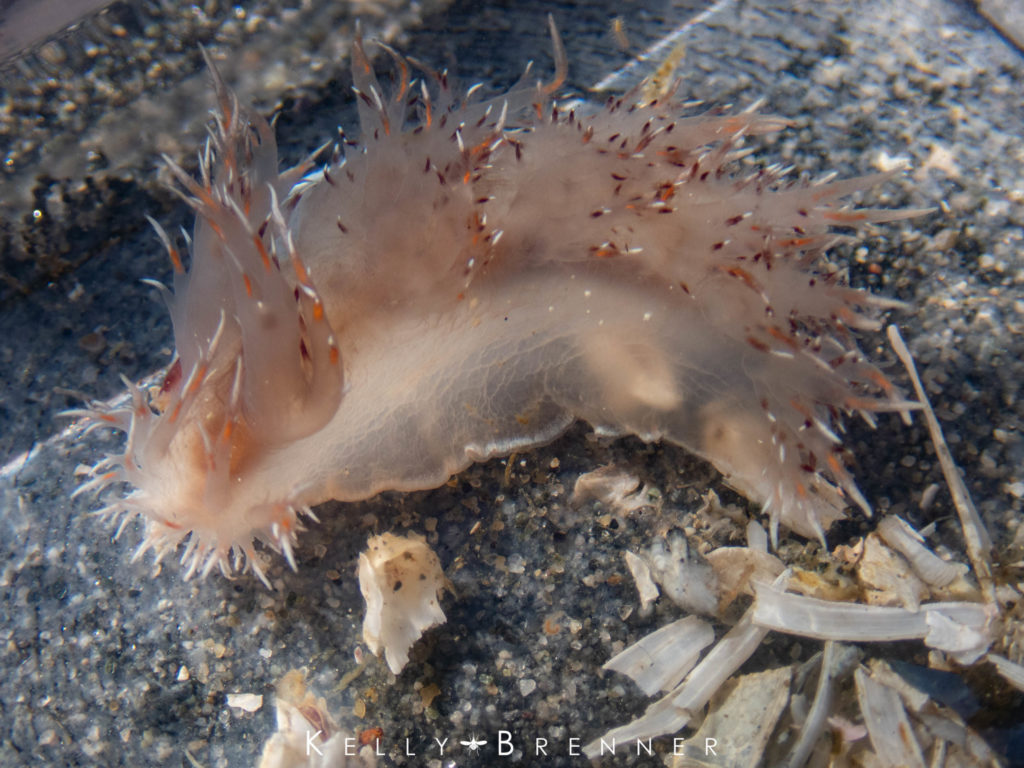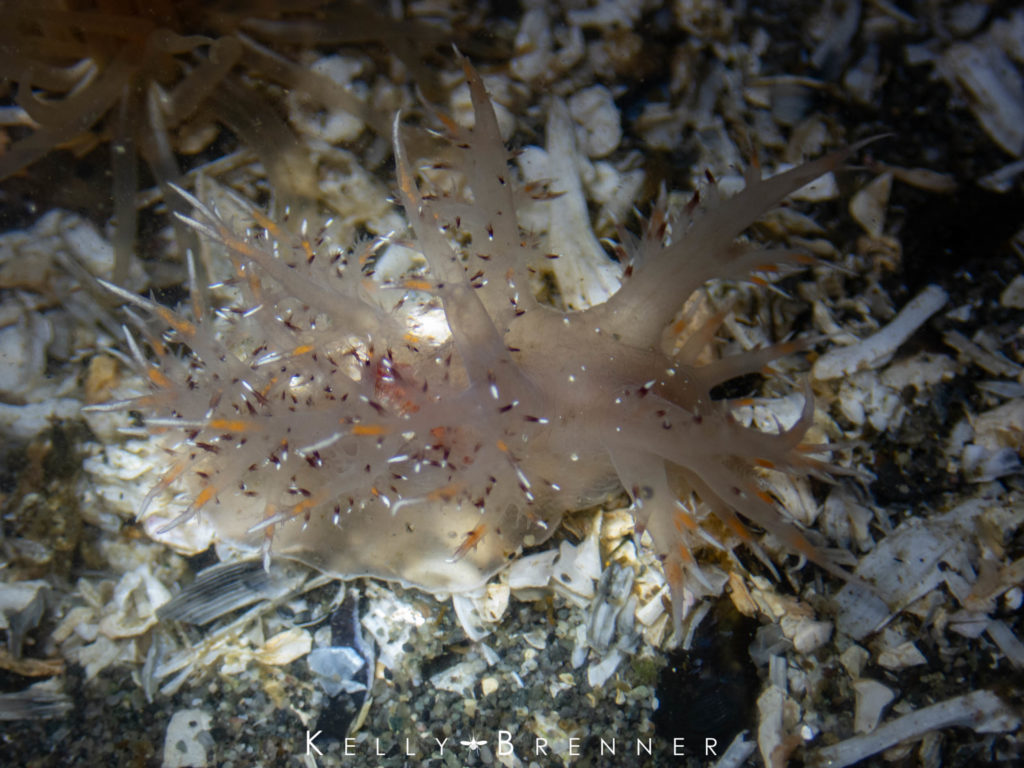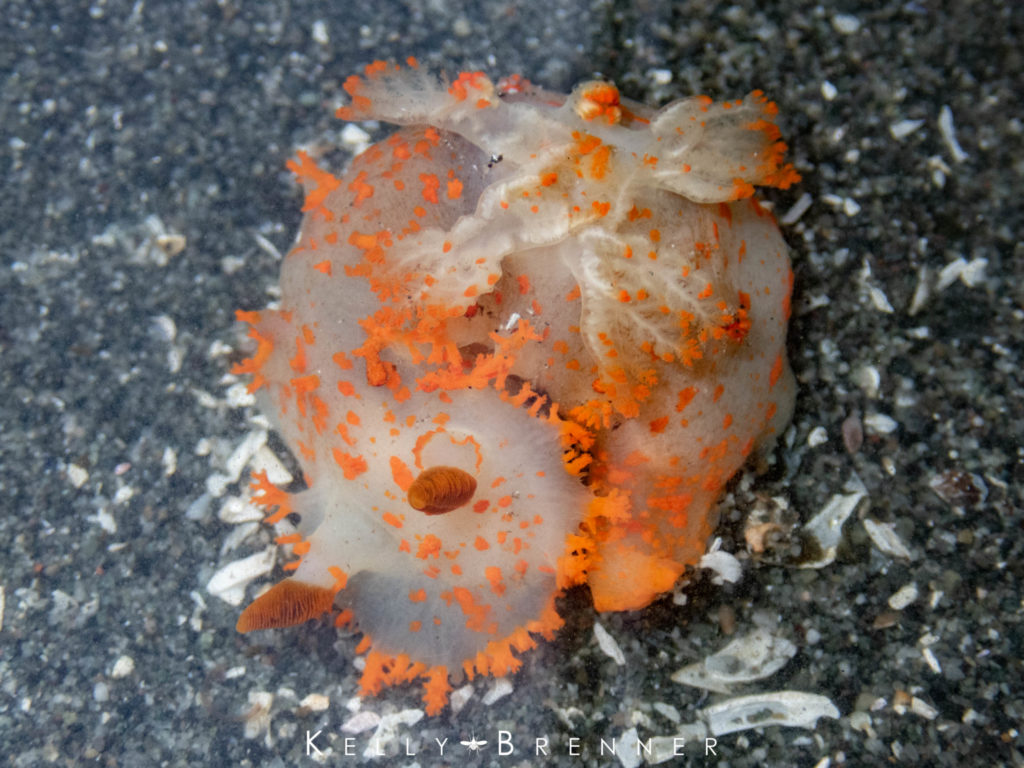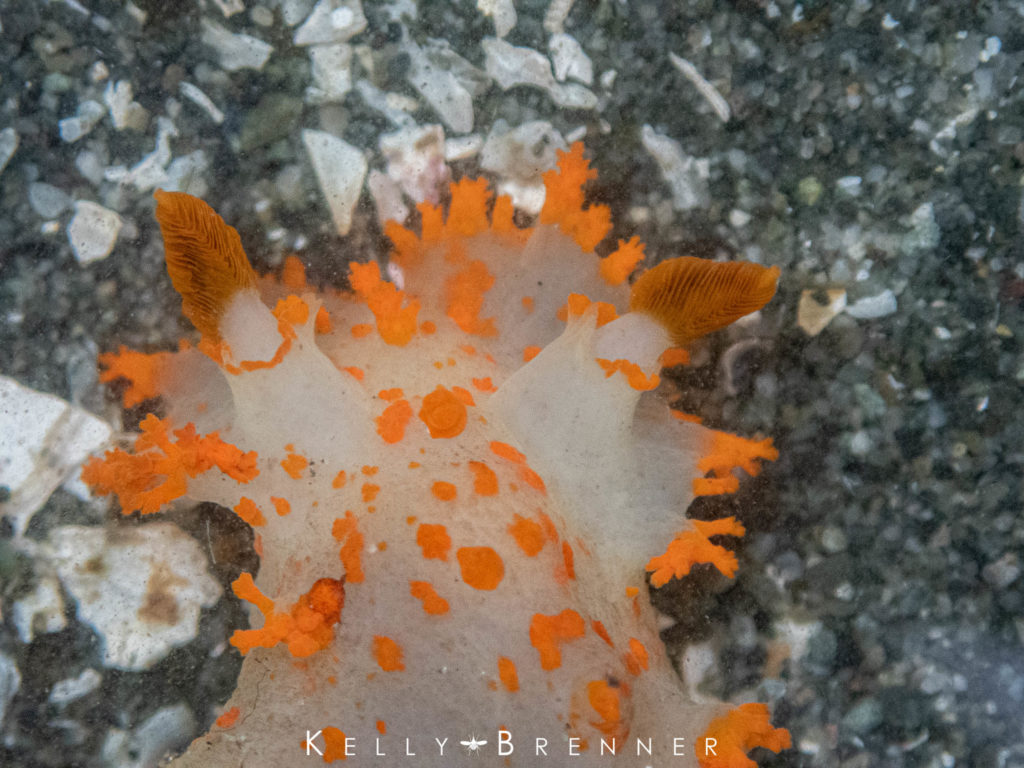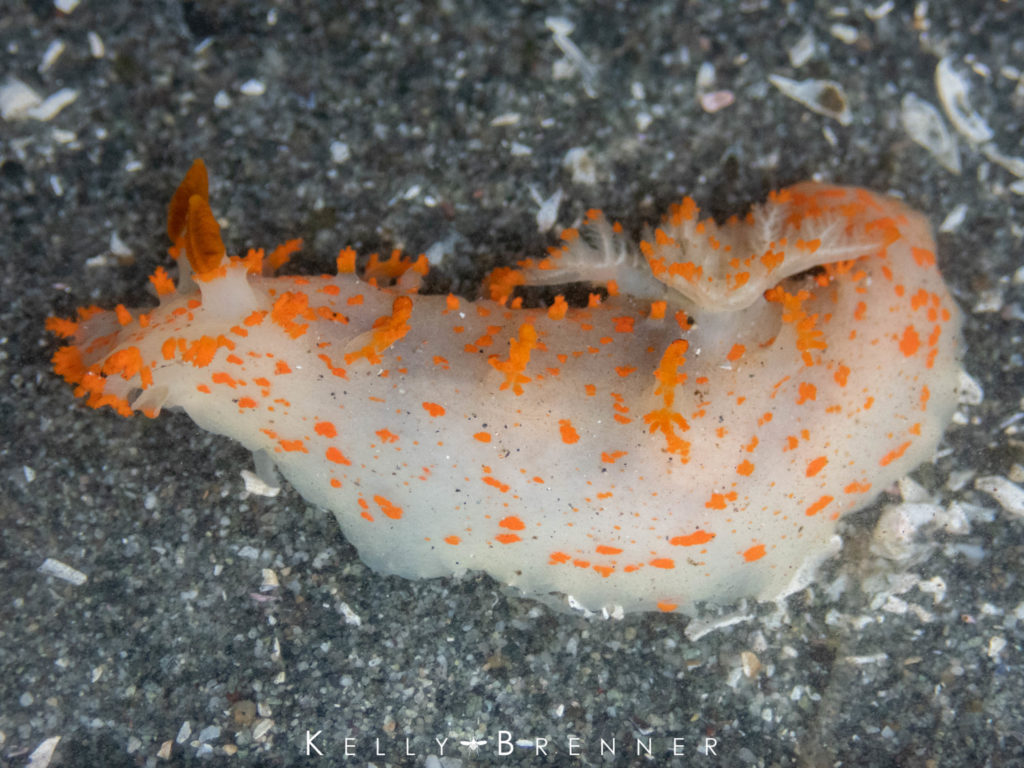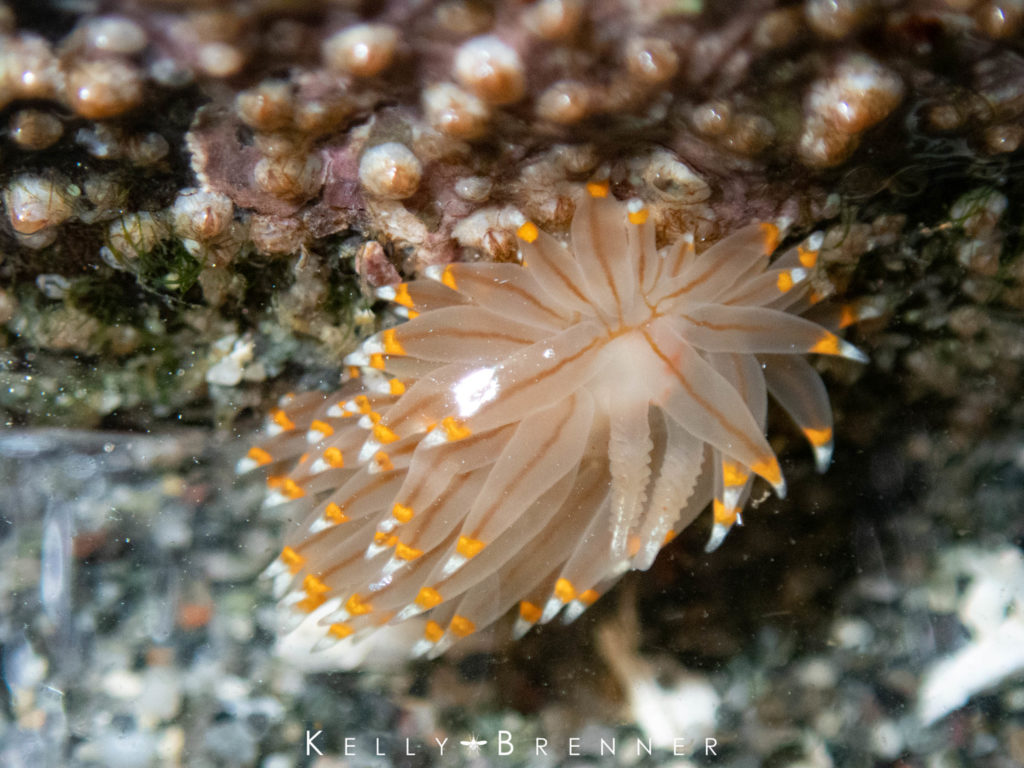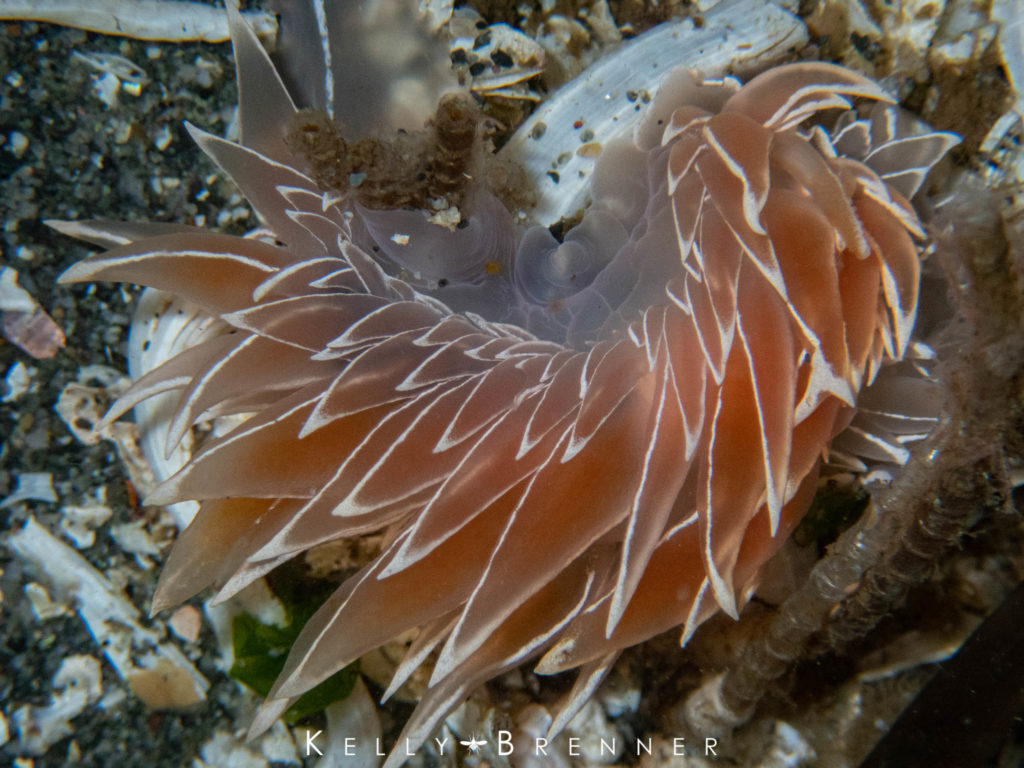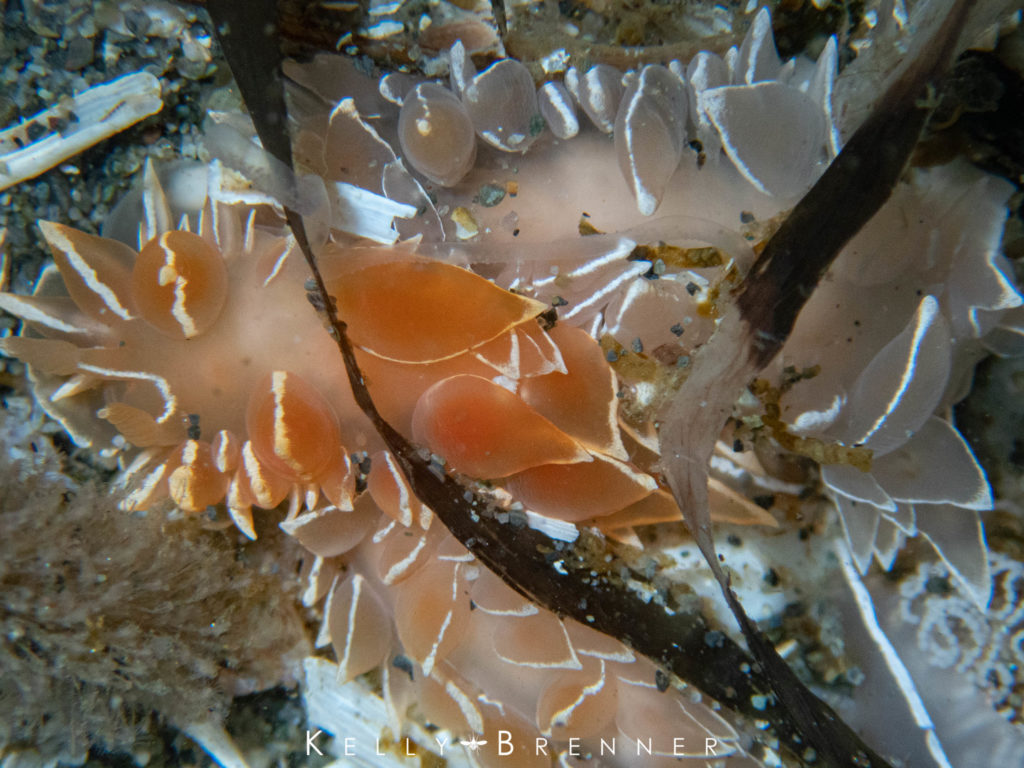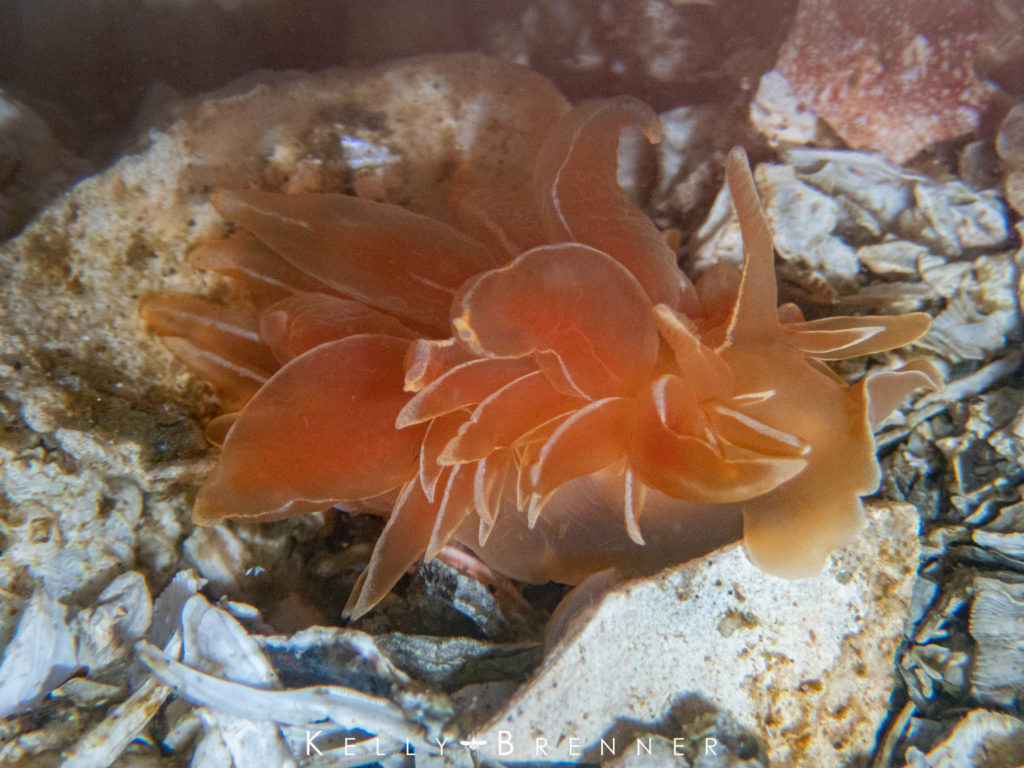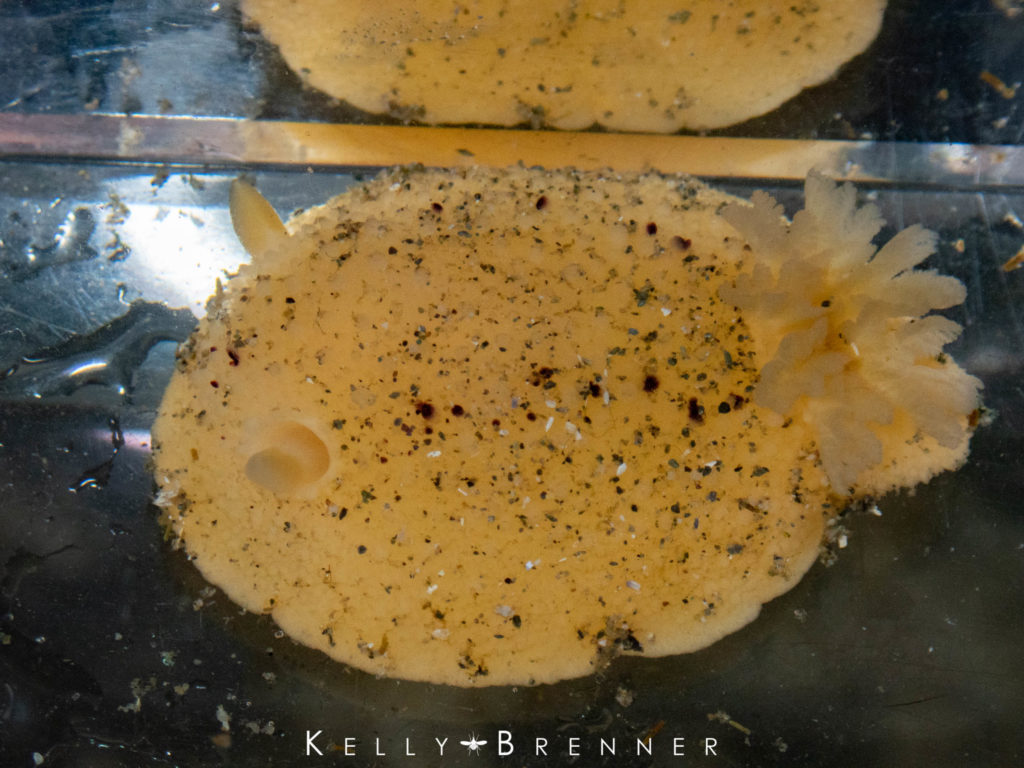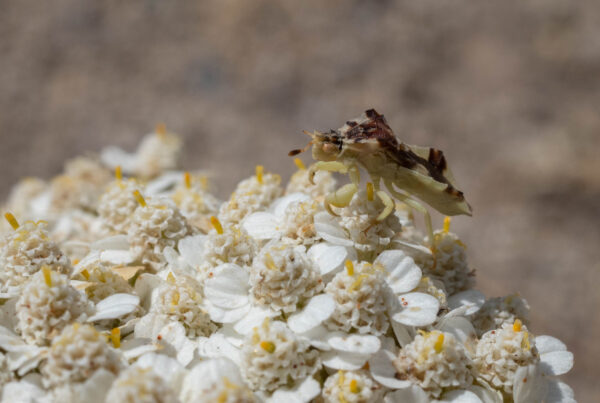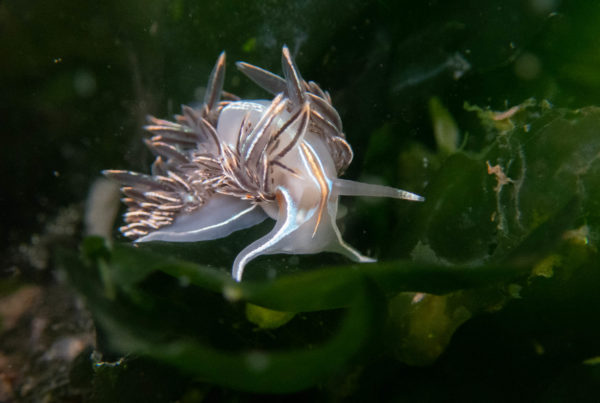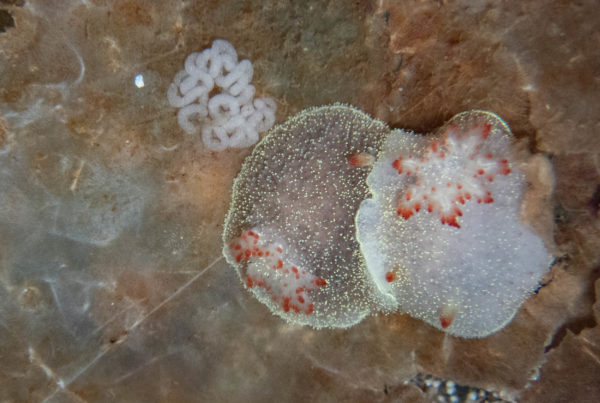Every summer in Seattle I usually spend my time at Alki Beach when low tide rolls around. Until this year. This summer I spent most of the low tides under the ferry dock. I have found many species of nudibranchs at Alki Beach, but this summer I also found a lot under the dock. Not only did I find many species, but of some of those species, I found many individuals. And they were easy to find.
The ferry dock isn’t the easiest place to search because the ferry kicks up the water creating a constant motion and as a result, the sediment suspended in the water can be fairly dense. But when the tide is at the lowest of the year, the water gets really low and even vanishes in some areas altogether, revealing the nudibranchs. Earlier in the summer when I visited, there were hundreds of Thick-horned Nudibranchs (Hermissenda crassicornis). They were later replaced by White Line (or Frosted) Dirona nudibranchs (Dirona albolineata).
On the most recent visits, the Frosted Dironas were so numerous that in some places I could have scooped out ten in a single handful. The Frosted Dironas are often as described, a frosted white color, but not always. They can also be gray, purple or even salmon or orange. This location has an abundance of orange sea pens and many of the Frosted Dirona nudibranchs are very orange, presumably from munching on the sea pens. The problem is, there is another Dirona which is always orange and looks very similar to the Frosted. I thought I had seen the Golden Dirona (Dirona pellucida) several times only to be tricked by a very orange Frosted Dirona. Imagine my excitement when I finally did fine a lone Golden Dirona among the dozens and dozens of Frosted Dironas!
Over the last round of low tides I found many of the same species as last time including Monterey Dorids (Doris montereyensis), Clown Dorids (Triopha catalinae), White and Orange Tipped Nudibranchs (Antiopella fusca) and Thick-horned Nudibranchs (Hermissenda crassicornis). But that wasn’t all!
In addition to the Golden Dirona, I found another new-to-me species, a Rainbow Dendronotus (Dendronotus iris). These are seriously impressive nudibranchs which can grow up to a foot in length. The individual I found was still a juvenile and no more than three inches long, but it was exciting to find one. They are very spiny with spines on their spines, all of which are of course very squishy because they are slugs and not porcupines. But they have another neat trick, they can swim! Not many nudibranchs can claim this talent, but the Rainbow Dendronotus can lift off and by flexing their bodies back and forth, can actively swim. I was fortunate to watch the juvenile do exactly that.
It’s always thrilling when after spending so much time at one place, that location starts to reveal more secrets. It’s one of my favorite things I’ve learned as a naturalist, no one place will reveal all at first. There are always more secrets to discover.

